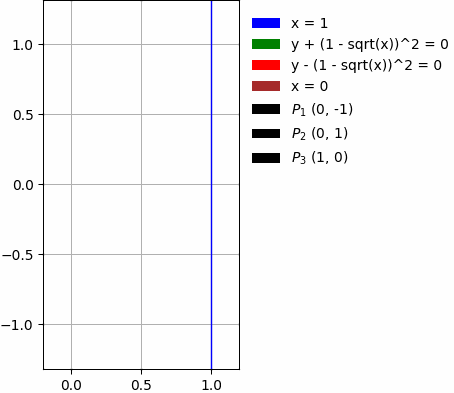Double Integral Step-by-Step
The teacher will be very surprised to see your correct solution to the integral 😉
What can it do?
- Calculate double integral over the region between defined curve lines (here), thereby setting the limits of integration in it here
- Helps to calculate the area between curves via double integral
- Do calculate the iterated integral (with already known limits)
- Do write the double integral of f(x, y) as the iterated integral
- It calculates the mass of a plate using the double integral
- Reverse the order of the integration in the iterated integral (here)
- If using polar coordinates, makes sense, then they are used
To calculate the area
To calculate the area between curves bounded by lines using the double integral, simply substitute 1 into the integrand function. Also you can use this calculator: Area of the region between the curves
Examples of double integrals
- With a square
8*x*y+9*x^2*y^2
- With cube
x^3+x*y^2
- With sinus and square root
sin(sqrt(x^2 + y^2))/sqrt(x^2 + y^2)
- Linear function
2*x + y
- Find the area of the figure bounded by curves using the double integral
x^3*y^2
- Reverse the order in the double integral
x^3*y^2
- The double integral over the region D, bounded by two (and more) curves
x^3*y^2
- Set the limits of integration in the double integral
x^3*y^2
- Double integral in the polar system
e^(x^2+y^2)
yln(1-x^2-y^2)/(x-sqrt(x^2+y^2))
How to define region D?
General region D can be over:
- Curve lines:
- Circle
- Two circles
- Ellipse
- Parabola
- Other
- Via vertices:
- The triangle (triangular region)
A(0, 1)
B(1, 0)
C(0, 0)
- The square
- The rectangle
- The triangle (triangular region)
- and — the quadrant
As inequalities
Define the constraint for the integration region as an inequality (inequalities):
x > pi/2
-1/2 < y <= 3/2
x < sqrt(2)/2 + 1

The above examples also contain:
- the modulus or absolute value: absolute(x) or |x|
-
square roots sqrt(x),
cubic roots cbrt(x) -
trigonometric functions:
sinus sin(x), cosine cos(x), tangent tan(x), cotangent ctan(x) - exponential functions and exponents exp(x)
-
inverse trigonometric functions:
arcsine asin(x), arccosine acos(x), arctangent atan(x), arccotangent acot(x) -
natural logarithms ln(x),
decimal logarithms log(x) -
hyperbolic functions:
hyperbolic sine sh(x), hyperbolic cosine ch(x), hyperbolic tangent and cotangent tanh(x), ctanh(x) -
inverse hyperbolic functions:
hyperbolic arcsine asinh(x), hyperbolic arccosinus acosh(x), hyperbolic arctangent atanh(x), hyperbolic arccotangent acoth(x) -
other trigonometry and hyperbolic functions:
secant sec(x), cosecant csc(x), arcsecant asec(x), arccosecant acsc(x), hyperbolic secant sech(x), hyperbolic cosecant csch(x), hyperbolic arcsecant asech(x), hyperbolic arccosecant acsch(x) -
rounding functions:
round down floor(x), round up ceiling(x) -
the sign of a number:
sign(x) -
for probability theory:
the error function erf(x) (integral of probability), Laplace function laplace(x) -
Factorial of x:
x! or factorial(x) - Gamma function gamma(x)
- Lambert's function LambertW(x)
- Trigonometric integrals: Si(x), Ci(x), Shi(x), Chi(x)
The insertion rules
The following operations can be performed
- 2*x
- - multiplication
- 3/x
- - division
- x^2
- - squaring
- x^3
- - cubing
- x^5
- - raising to the power
- x + 7
- - addition
- x - 6
- - subtraction
- Real numbers
- insert as 7.5, no 7,5
Constants
- pi
- - number Pi
- e
- - the base of natural logarithm
- i
- - complex number
- oo
- - symbol of infinity
Use the examples entering the upper and lower limits of integration in the double integral.
